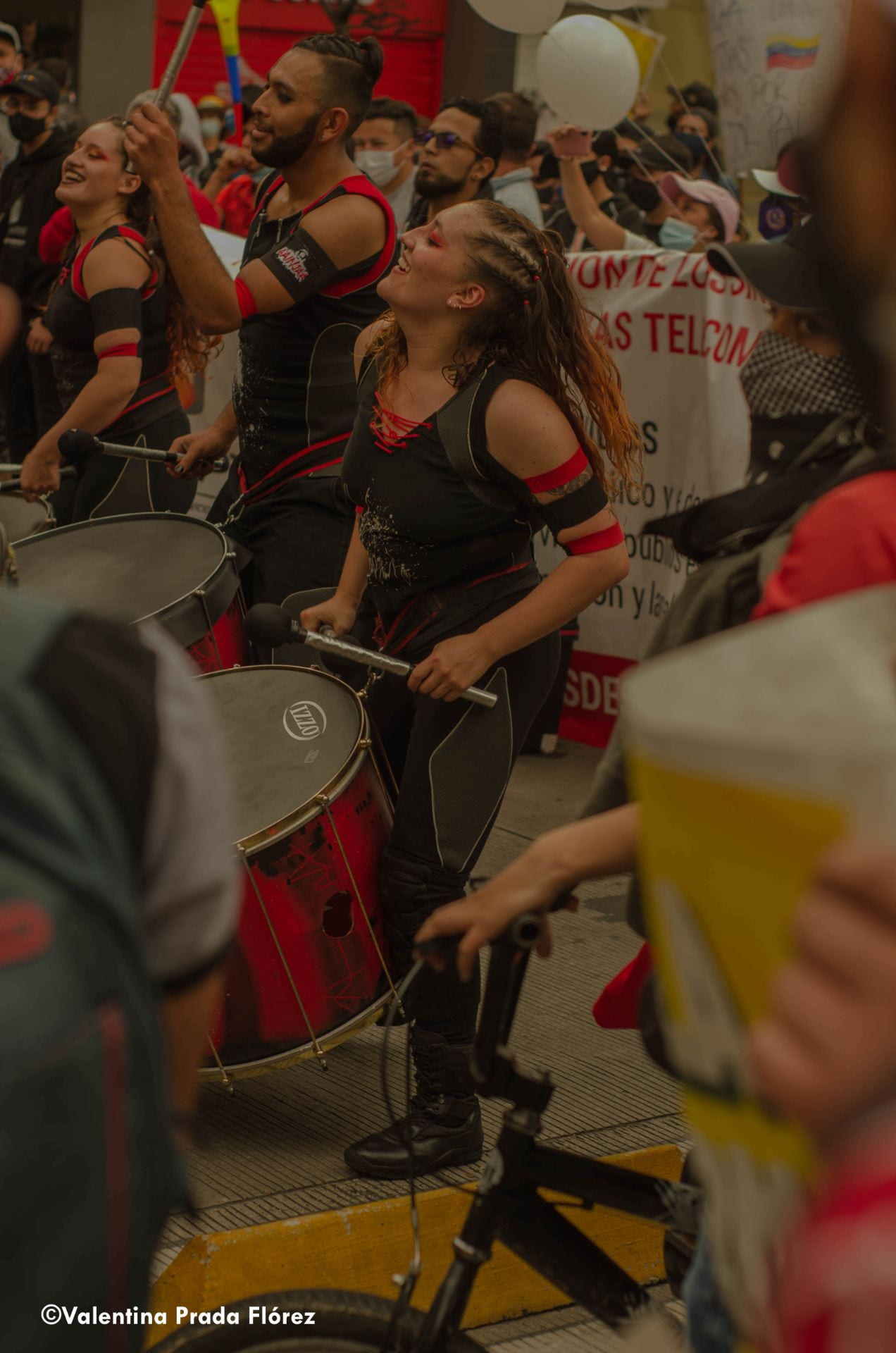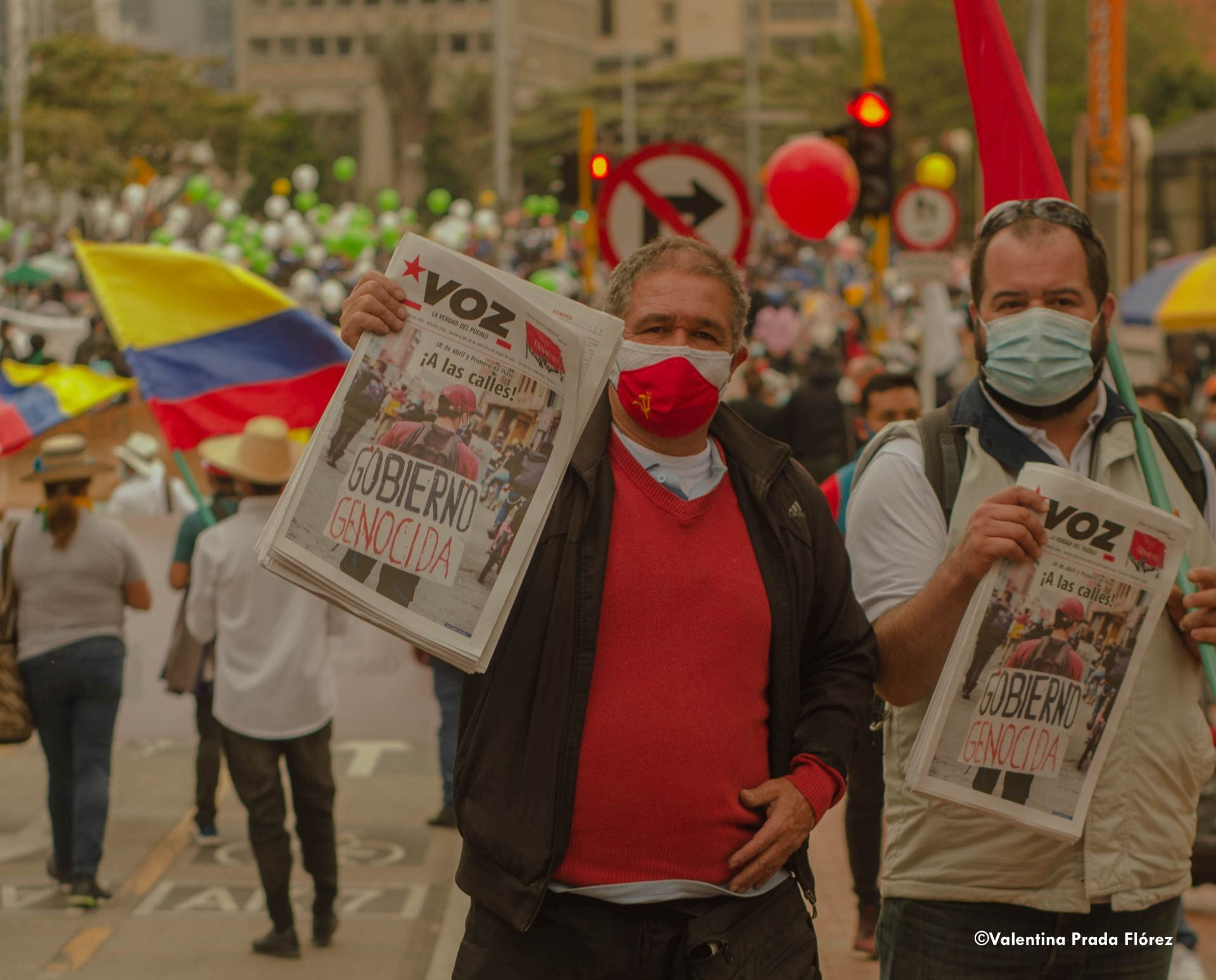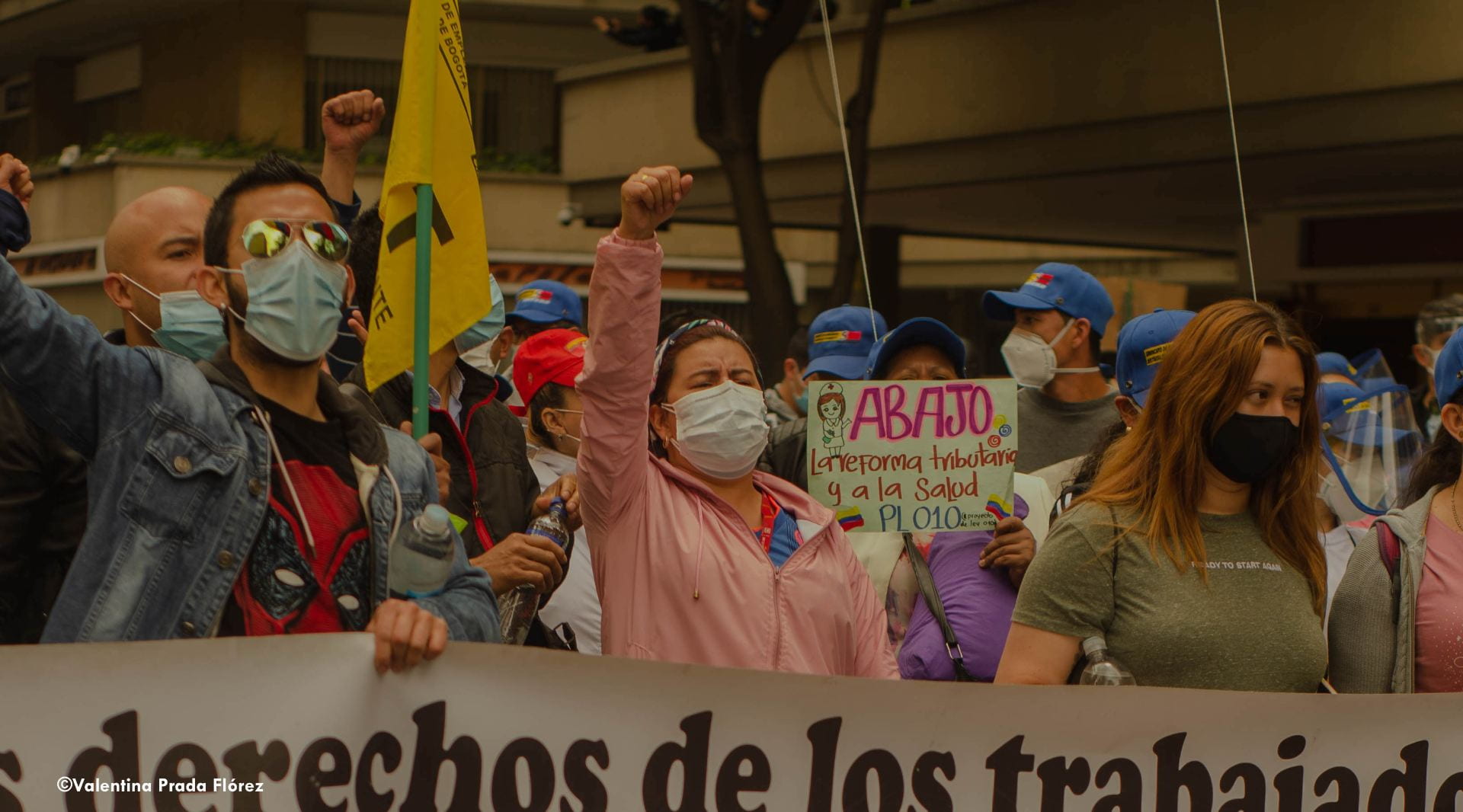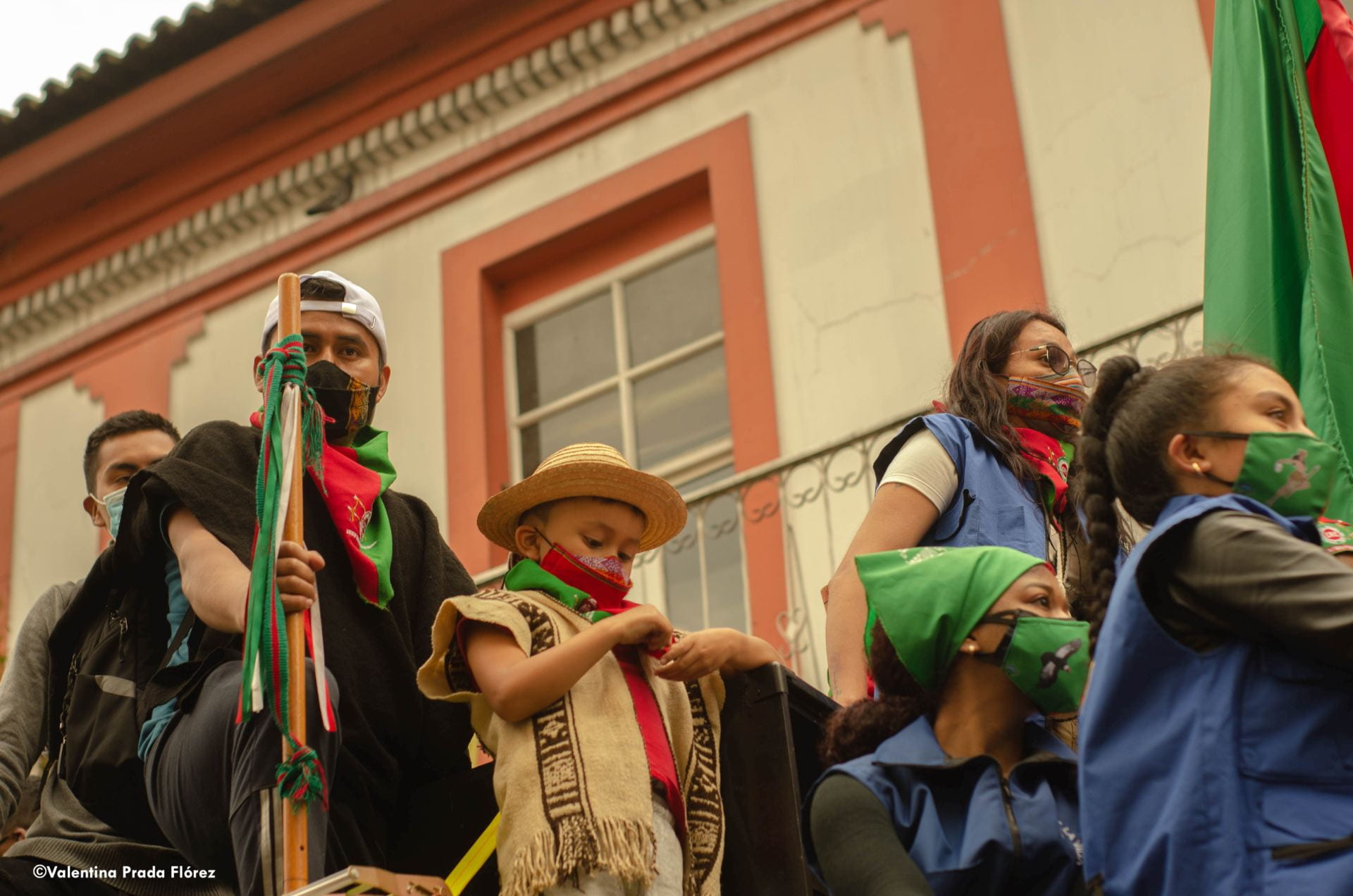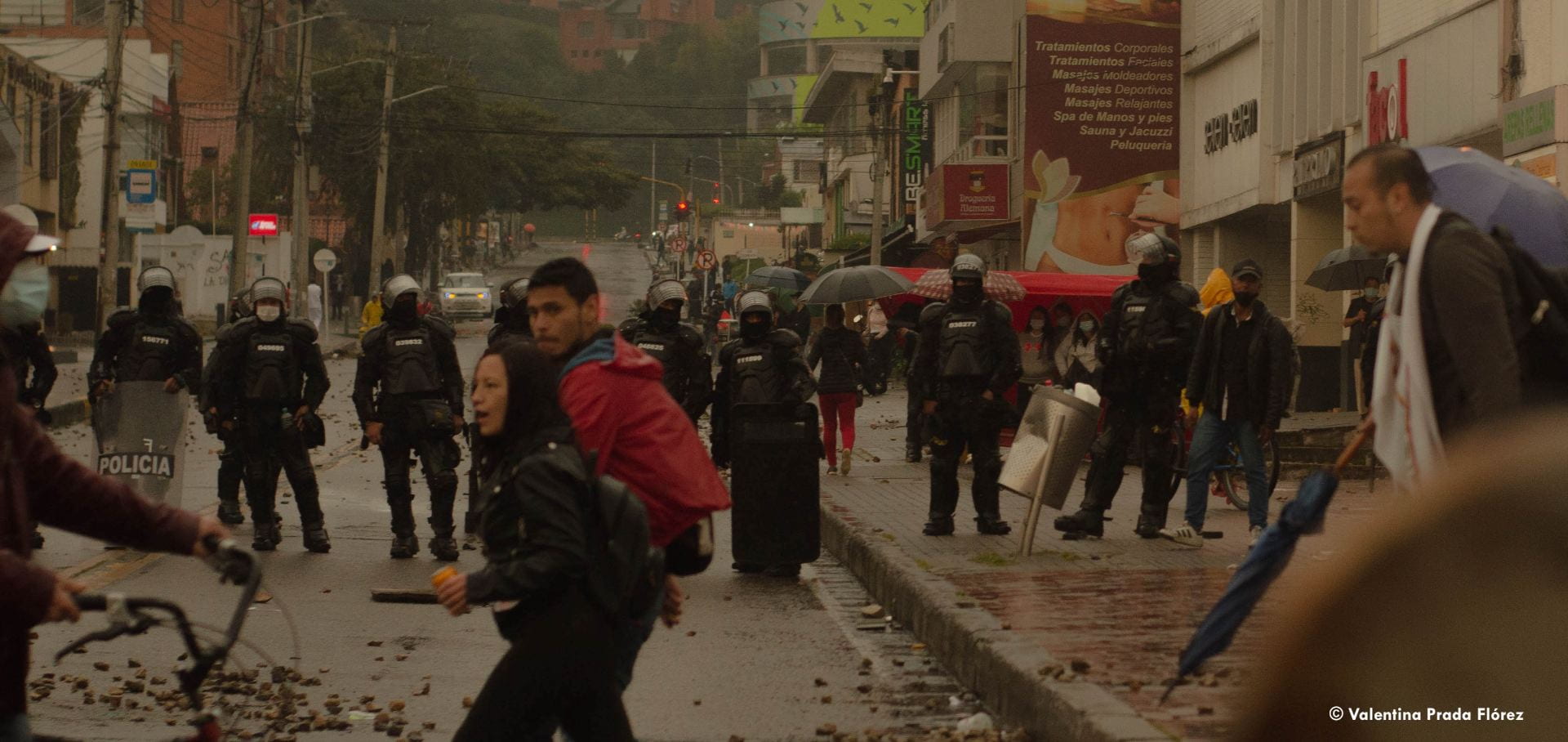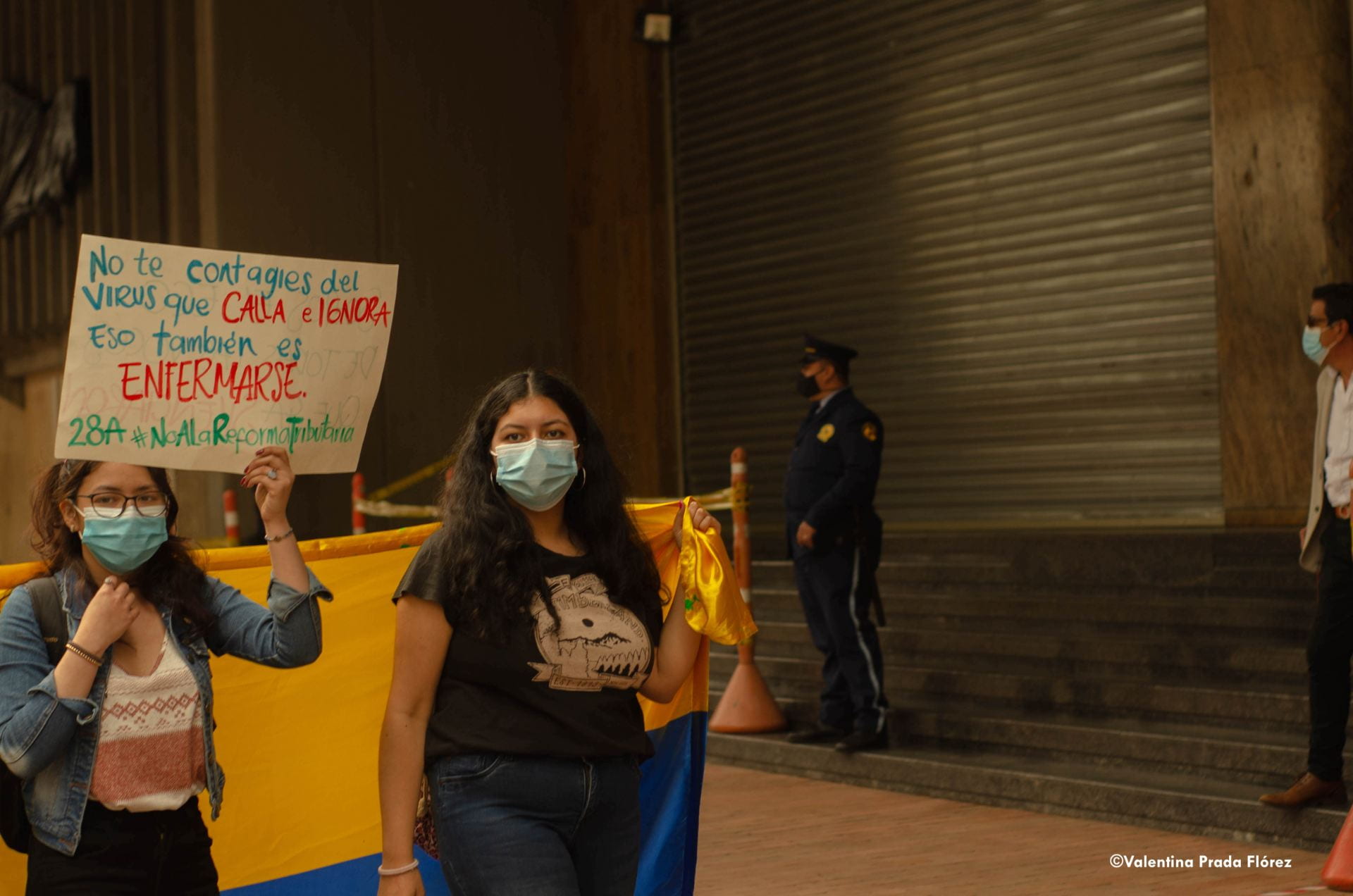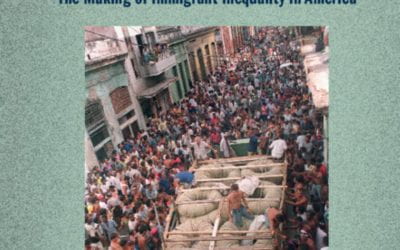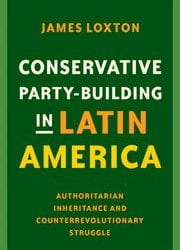Colombia’s Young People:
Facing Bullets for Their Beliefs
Photos by: Valentina Prada Florez, Instagram @valentinapradafl
As their country tries to move towards peace, Colombia’s young people are doing everything they can to meet the moment.
It’s something that I noticed the very first time I reported from the country back in 2016, and found a nation that didn’t at all fit the stereotypical reputation that many foreigners have come to accept: a much-maligned country filled with narco-traffickers and guerrilla soldiers.
On my first trip I met a young man who was transforming his small, rural hometown into a regional center for ecological conservation in a remote corner of Colombia’s northern swamplands. I returned to travel the length of the legendary Río Magdalena—the most important river in the country, flowing nearly 1,000 miles from its source high in the Andes mountains to its mouth on the Caribbean Sea to pursue an ongoing project meant in part to explore how the people of Colombia’s heartland are recovering from more than half a century of conflict. In my travels, I met dozens of other young leaders working tirelessly to pull their communities out of violence and towards a more stable and resilient peace.
They are historians and writers who preserve the cultural memory of pre-colonial times; local villagers who now hatch and release critically-endangered river turtles instead of eating their eggs; climate activists who protest mega-mining projects and human-rights violations and envision a more sustainable future for the second most biodiverse country on Earth. Thousands more make their voices heard through nonviolent means, and on social media.
Police have killed dozens of young protesters
Today, in the midst of a still-raging pandemic, brave young Colombians are being killed and assaulted in the streets at an unimaginable scale. Protests over a proposed bill to raise taxes — which was quickly revoked — have now shifted towards more general outrage over rising pandemic-induced poverty, hunger, and joblessness among the lower and middle classes of Colombia, and longstanding frustration with the current government over the implementation of the 2016 peace deal that officially ended more than half a century of armed conflict in the country. Protesters have been met with state repression and police brutality and dozens have been killed by government forces. Hundreds more have been injured, and riot control officers are facing multiple allegations of sexual abuse.
“People are not taking to the streets in the middle of a pandemic because they want to,” said Francia Márquez Mina, 39, one of Colombia’s most prominent human-rights defenders and a current presidential candidate, told me by phone from the city of Cali, where she’s been marching alongside protestors. “There is no other way out.”
It’s a rapidly unfolding human rights crisis. Videos of the killings, some even broadcast live on social media, show instances of police (or ESMAD — the national anti-riot force) officers shooting into crowds. People in their teens and 20s have made up a huge portion of the demonstrators, and according to INDEPAZ, a national Colombian peacebuilding organization, the majority of injuries and deaths.
Marcelo Agredo, a high schooler, was killed by police in Cali after kicking a police officer. Santiago Murillo, 19, was killed while heading home from a protest in the city of Ibagué. Nicolás Guerrero of Cali, an artist and activist in his early 20s, was shot in the face by police in the midst of a peaceful protest being streamed live on Instagram. The youngest person known to have been killed was just 13 years old.
“As an activist, as a student, as a citizen, I’ve risked my life by taking to the streets and fighting for our rights,” said one 18-year-old woman from Cali, who asked that her name not be revealed because she has received death threats for speaking out. “It’s unimaginable that in the middle of peaceful, artistic, and cultural protests, the [riot police] officers would arrive every day to spray tear gas, confront the protestors, and violate our human rights. In Cali they are killing people simply for protesting against a corrupt government, a government that doesn’t think about the needs — food, jobs — of the people of Cali and the people of Colombia.”
“Today people are rising up, and more than anyone else it’s young people,” added Márquez. “I think about all these young people who are in the streets and I think about my own children. And I think about all the mothers, these women who are losing their children every day, who are getting the news that their children have been hurt, assassinated, jailed by the state…it’s sad, but we know we have to forge on, to keep resisting, to keep fighting.”
Response to government failures
Colombia’s former president, the far-right politician Álvaro Uribe, took to Twitter over the weekend to defend “the right of soldiers and police officers to use their weapons to defend themselves” against what he called “terrorism.” The tweet was soon removed, and Twitter cited “glorification of violence,” but many also saw the tweet as a green light for Uribe’s mentee, the current President Iván Duque, to escalate the state’s repressive response.
It’s an apex point of violence against a generation that has already faced multiple threats in the years since the 2016 peace agreement. The conservative Duque administration has been resoundingly and rightly criticized for being slow to implement the accords, especially in rural areas. Colombia is now one of the most treacherous countries in the world for social leaders and activists, whose community initiatives often run counter to the interests of armed groups fighting for control of the resource-rich countryside —not long ago a 10-year-old received death threats for his environmental and educational activism. And in the past year especially, repeated massacres and shootings have led to youth deaths across the country. The Duque government has been accused of not doing enough to solve or stop these crimes.
“We young people are the ones sticking our necks out for our country, in every sense, and we’re just met with constant repression,” Sofía, a 17-year-old activist in Bogotá who asked that her last name not be used, told me. “To be a young person in Colombia is not only an act of survival, but an act of rebellion. We want to put an end to the systematic violence that has been upheld by so many.”
Hope for a better future
Young people I speak with all over Latin America have echoed Sofia’s sentiment: That in a digital, globalized world, grassroots activism is a tool that feels more appealing and more powerful than ever before. I’ve written about how the pandemic has galvanized our generation of young adults in the United States to fight harder for positive social change. But in few places has it felt as urgent as in Colombia, where for many communities nearly every significant step forward has been met with a relapse into violence. The pandemic has, of course, made everything worse, with nearly 43% of the country’s population now in poverty.
And yet there is so much that Colombians love about their own country and want to see flourish — including its hugely diverse communities of, for example, Black and Indigenous and Arab Colombians sprinkled throughout cosmopolitan cities and charming small towns; its rich musical and literary history; and the vast natural beauty of its mountains and jungles, swamplands and savannas. Such enchantments drew me to Colombia in the first place, but it’s the complexities and contradictions that will continue to mark Colombia’s fragile path towards peace in the years to come.
At the very least, this new generation should have a safe and fair way to speak its mind about the country and world they want to live in. That’s why, at yet another important inflection point for democracy in the Americas, the international community must not only condemn the current violence against protestors, but continue to pressure the Colombian government in the long term to protect defenders of human rights and the environment across the country.
For young people, change can’t come soon enough. “Our generation is not going to be silenced by fear,” said Sofía. “We are going to push until things change for the better.” To do our part from afar, we must stand with the pueblo of Colombia and ensure that our own leaders do the same.
Jordan Salama is a writer and journalist. His first book, Every Day the River Changes, a journey down Colombia’s Río Magdalena, will be published by Catapult in November. Instagram: @ jordansalama19
Related Articles
A Review of Cuban Privilege: the Making of Immigrant Inequality in America by Susan Eckstein
If anyone had any doubts that Cubans were treated exceptionally well by the United States immigration and welfare authorities, relative to other immigrant groups and even relative to …
A Review of Conservative Party-Building in Latin America: Authoritarian Inheritance and Counterrevolutionary Struggle
James Loxton’s Conservative Party-Building in Latin America: Authoritarian Inheritance and Counterrevolutionary Struggle makes very important, original contributions to the study of…
Endnote – Eyes on COVID-19
Endnote A Continuing SagaIt’s not over yet. Covid (we’ll drop the -19 going forward) is still causing deaths and serious illness in Latin America and the Caribbean, as elsewhere. One out of every four Covid deaths in the world has taken place in Latin America,...

